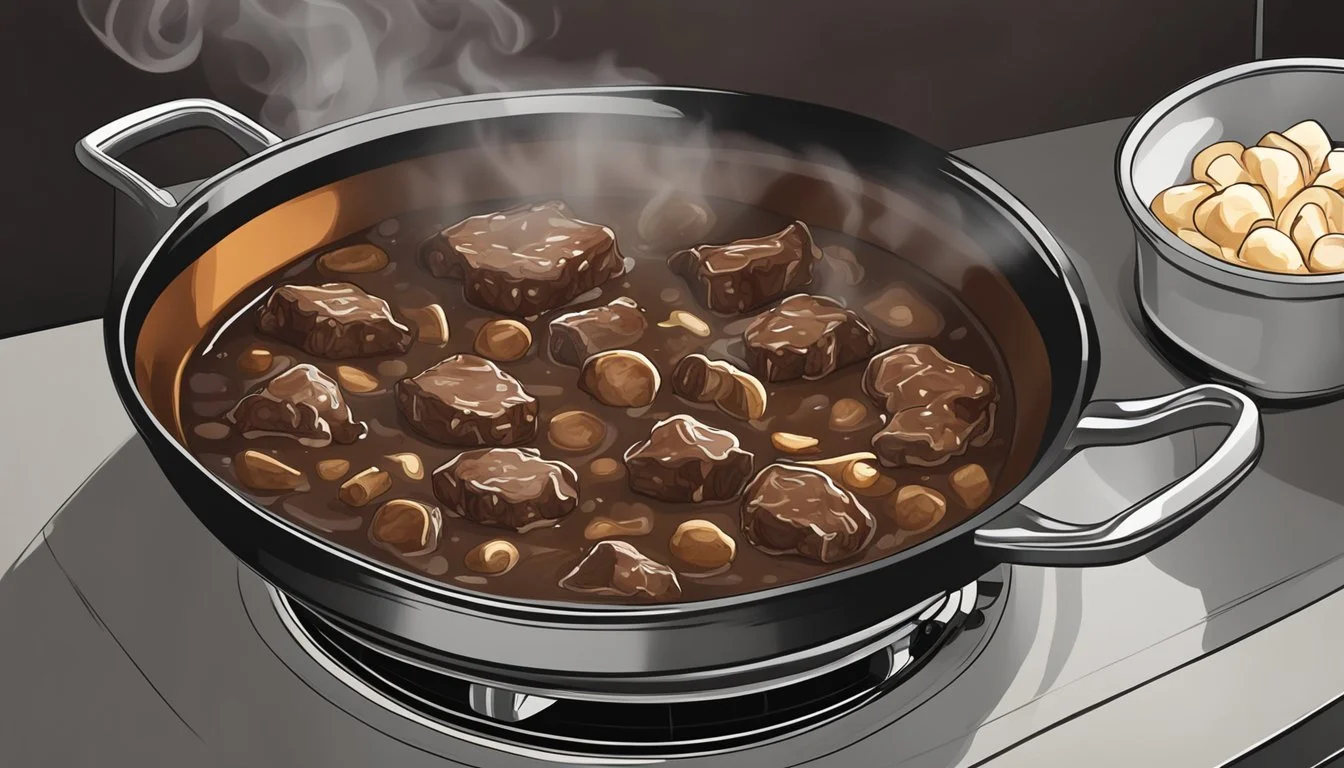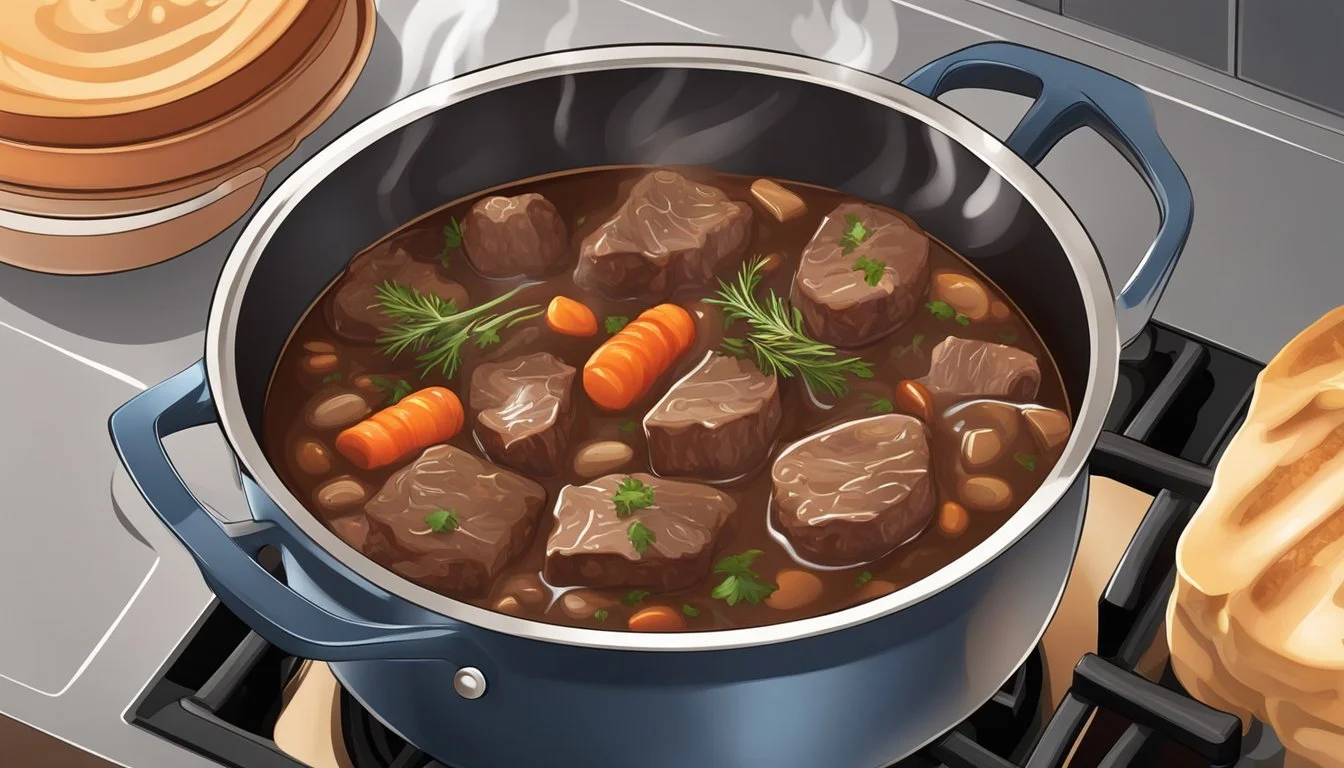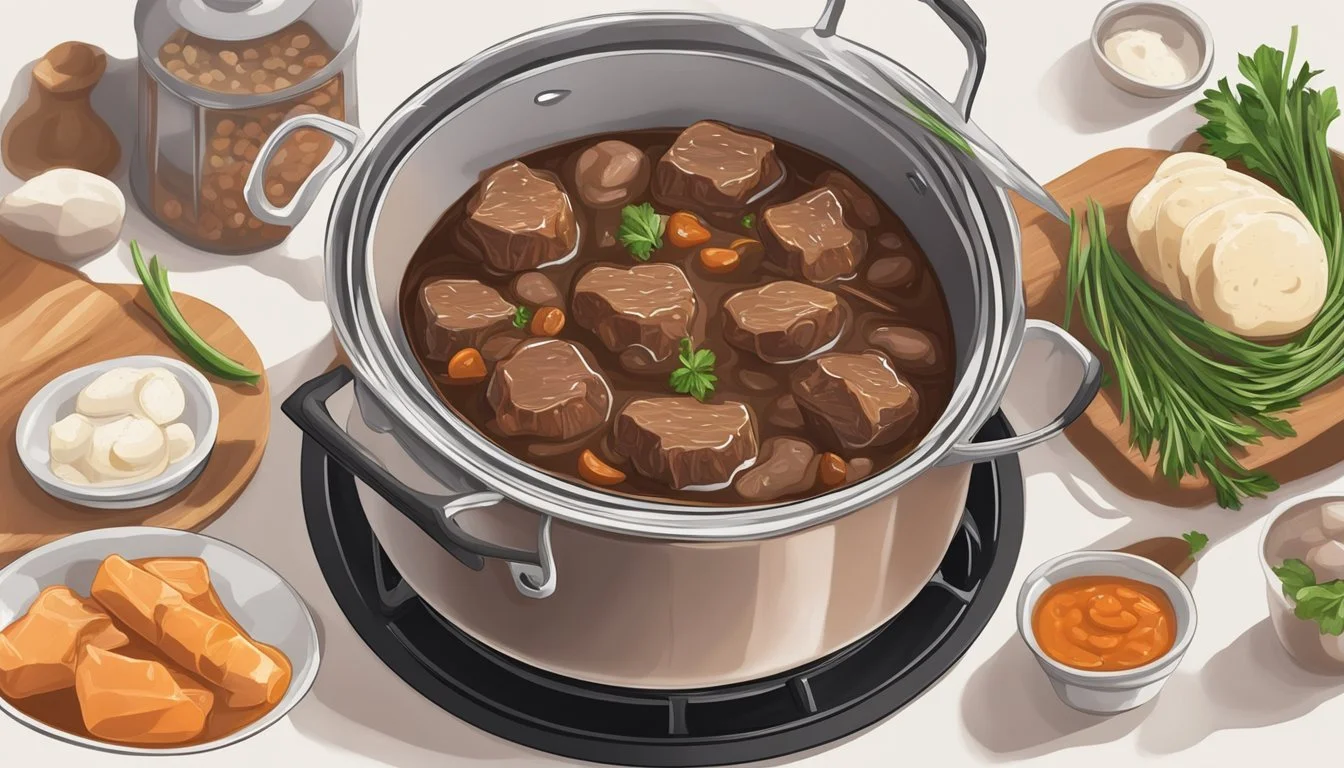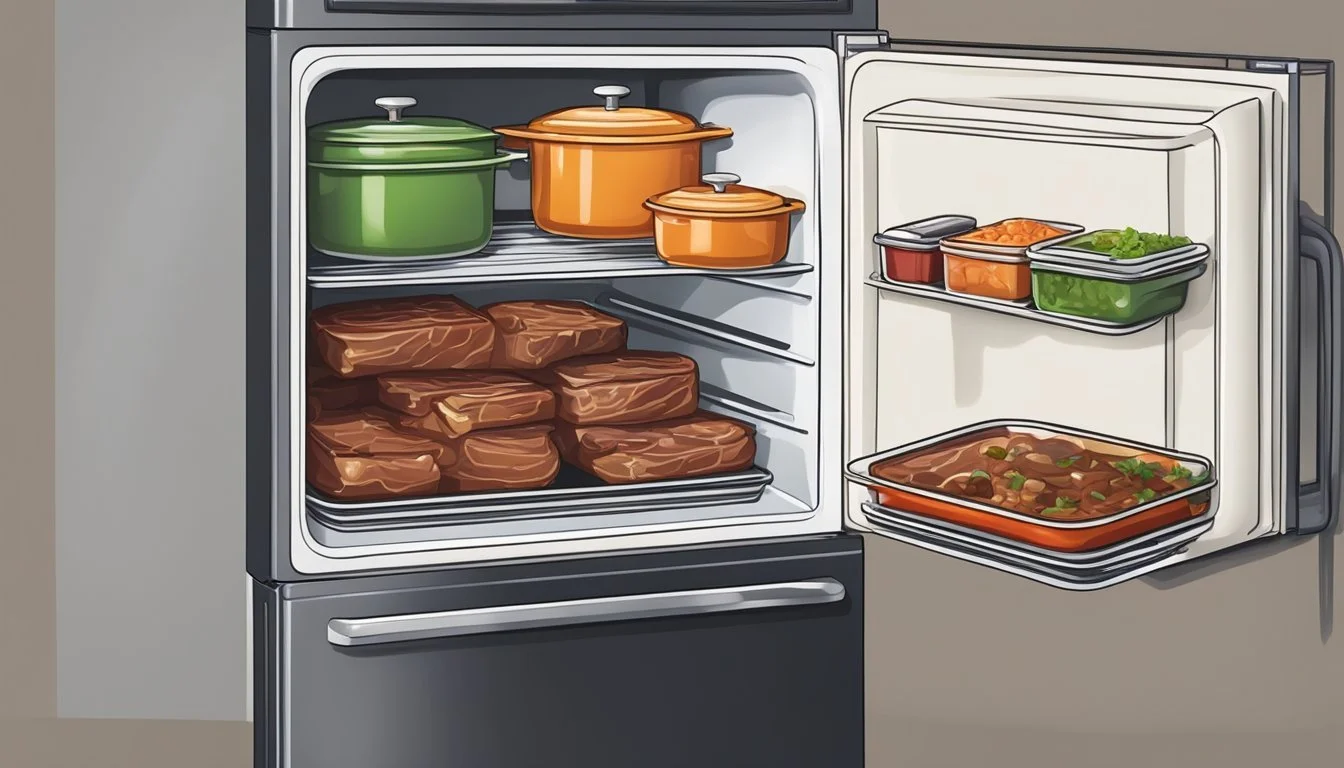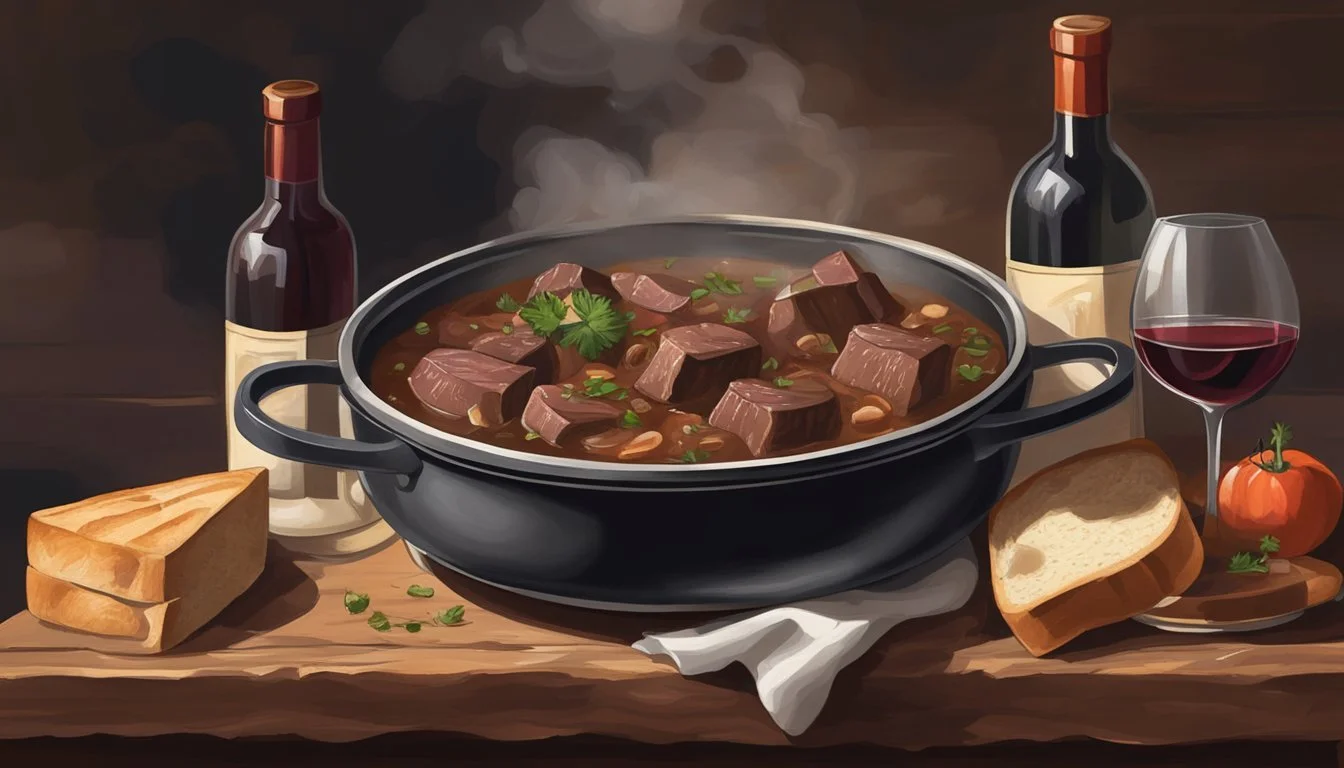Best Way to Reheat Beef Bourguignon
Ensuring Tender Meat and a Rich Sauce
Beef (What wine goes well with beef?) bourguignon (What wine goes well with beef bourguignon?), a classic French dish renowned for its depth of flavor and tender meat, can be a culinary masterpiece when made fresh. However, the challenge often lies in reheating leftovers without compromising the texture of the beef or the richness of the sauce. To preserve the integrity of this dish upon reheating, certain techniques must be employed to ensure the meat remains tender and the sauce retains its complex flavor profile.
Careful temperature control and gentle heat are key when reheating beef bourguignon. The dish should be warmed slowly in an oven preheated to a moderate temperature. Covering the oven-safe dish with aluminum foil can prevent moisture loss, making a significant difference in the outcome. This method facilitates even heat distribution, allows flavors to meld, and ensures that the beef does not become tough during the reheating process.
Adding moisture is also a crucial step in reviving beef bourguignon to its original glory. A splash of broth or water can breathe new life into the sauce, ensuring it remains rich and robust. Stirring occasionally during the reheating process promotes uniform heating and helps to integrate any additional liquid, maintaining the hearty, velvety texture that is characteristic of the dish. By following these tips, one can achieve a reheated beef bourguignon that is as satisfying as when it was first prepared.
Understanding Beef Bourguignon
Beef Bourguignon is a classic French dish renowned for its deep, rich flavors, resulting from a careful process of slow cooking. This traditional stew is built around a base of succulent beef, braised tenderly in red wine, typically from the Burgundy region, which imparts a notable complexity to the dish.
The dish's robustness is enriched with the inclusion of bacon, which adds a smoky depth. Aromatic vegetables such as carrots, mushrooms, and pearl onions join the medley, each lending their unique textures and flavors. The savory blend is further enhanced by tomato paste and a bouquet of herbs like thyme and bay leaves, which infuse the sauce with their rustic, earthy notes.
Key Ingredients:
Beef: Hearty and rich
Bacon: Adds smokiness
Carrots/Mushrooms/Pearl Onions: Provide sweetness and earthiness
Tomato Paste: Lends a tangy depth
Herbs: Thyme and bay leaves for aromatic undertones
Integral to Beef Bourguignon's enchantment is the slow-cooking process. This method ensures that the beef pieces become incredibly tender, absorbing the savory essences of the sauce. During reheating, one must strive to retain the meat's tenderness and the sauce's luxurious richness to honor the dish's storied legacy.
Preparation for Reheating
Proper preparation is essential to reheat beef bourguignon effectively, ensuring the meat remains tender and the sauce retains its richness. The three key steps; bringing the dish to room temperature, preheating the oven, and choosing appropriate containers, are foundational for optimal reheating results.
Bringing to Room Temperature
Before reheating beef bourguignon, one should take the dish out of the refrigerator and allow it to come to room temperature. This step typically takes about 30 minutes and can help the meal heat more evenly, reducing the risk of overcooking the meat and compromising the sauce's texture.
Preheating the Oven
One must preheat the oven to a moderate temperature—typically around 350 degrees Fahrenheit (175 degrees Celsius)—to create an optimal environment for reheating. This preheating period lays the groundwork for gentle and even heating, crucial for maintaining the integrity of the beef bourguignon.
Using the Right Containers
For oven reheating, transferring the beef bourguignon to an oven-safe dish is imperative. If one uses aluminum foil to cover the dish, it helps to lock in moisture and prevent the top layer from drying out. It is essential that containers used in microwaves are labeled as microwave-safe if this method is preferred. Regardless of the heating method, frequent stirring can promote even distribution of heat. When storing beef bourguignon prior to reheating, it should be kept in an airtight container to preserve its quality.
Reheating Techniques
Reheating beef bourguignon requires careful attention to temperature and method to preserve the meat's tenderness and the sauce’s richness. The following techniques ensure even heating and prevent the dish from drying out.
Oven Reheating
Reheating in the oven is ideal for keeping the beef tender and the sauce evenly heated. Preheat the oven to 325°F. Place the beef bourguignon in an oven-safe dish and cover it with aluminum foil to retain moisture. Heat for 25-30 minutes, checking periodically to prevent overcooking.
Stovetop Reheating
Stovetop reheating allows for better control over the temperature and can quickly bring beef bourguignon back to the optimal serving temperature. In a pot, simmer the dish over low heat with a lid on to trap steam and add moisture if necessary. Stir occasionally to ensure consistent heating.
Slow Cooker Reheating
Using a slow cooker can reheat beef bourguignon gently, preserving the meat's tenderness. Set the slow cooker to a low setting, add the beef bourguignon, and allow it to warm up slowly, reducing the risk of the meat drying out or the sauce separating.
Microwave Reheating
When time is short, microwaving is the fastest method. To prevent the meat from toughening, heat the beef bourguignon on 50% power for 3-4 minutes. Stirring the dish halfway through the process promotes even distribution of heat. Avoid letting plastic wrap touch the food, if used, to prevent melting.
Maintaining Optimal Flavor and Texture
To ensure that Beef Bourguignon retains its richness and tender texture, one needs a careful approach to reheating, focusing on optimizing temperature, preventing overcooking, and ensuring moisture is maintained throughout the process.
Avoiding Overcooking
A key concern when reheating Beef Bourguignon is ensuring the meat remains tender and not overcooked. Begin by:
Preheating: Preheat the oven to no more than 325°F (163°C).
Timed Reheat: Aim for a reheating time of 25-30 minutes to avoid toughening the protein.
Managing Temperature
Temperature control is crucial for the taste and texture of the dish:
Oven-Safe Dish: Transfer the Beef Bourguignon to an oven-safe dish to ensure even heat distribution.
Oven Settings: Set the oven to a moderate temperature to gently warm the dish without causing the flavors to dissipate.
Stirring and Moisture Retention
Retaining the rich sauce and preventing it from drying out requires attention to detail:
Add Liquid: If necessary, add a small amount of broth or water to the dish to maintain juiciness.
Cover: Use aluminum foil to cover the dish, which helps in keeping the meat moist and succulent.
Frequent Stirring: Stir occasionally to help the sauce distribute evenly and simmer to infuse flavor into every bite.
Safety and Storage Tips for Leftovers
Properly cooling, refrigerating, and freezing leftovers ensures that the beef bourguignon maintains its quality while reducing the risk of bacterial growth.
Cooling and Storing
Leftover beef bourguignon should be cooled rapidly to prevent bacterial growth. To accelerate cooling, divide the stew into smaller, shallow containers before storing. This practice allows the heat to dissipate more quickly, bringing the temperature of the leftovers down in a safer time frame.
Refrigeration Guidelines
Once cooled, leftovers should be transferred to the refrigerator. For optimal safety, one should use an airtight container to preserve the flavors and prevent contamination. Leftovers should be eaten within three to four days; during this time, the refrigerator should maintain a temperature at or below 40°F (4°C) to hinder bacterial growth.
Freezer Instructions
If the beef bourguignon will not be consumed within a few days, freezing is a viable option to extend its shelf life. To freeze, place the cooled stew into airtight containers or heavy-duty freezer bags. Label the bags or containers with the date, and aim to use the frozen leftovers within three months. This prevents potential freezer burn and ensures that the quality of the meat and sauce remains high when reheated.
Serving Suggestions
When presenting Beef Bourguignon, the right accompaniments enhance the dish's flavors, while thoughtful presentation elevates the overall dining experience.
Accompaniments
Mashed Potatoes: A classic choice, mashed potatoes offer a creamy texture that complements the richness of the stew.
Egg Noodles: They provide a delightful base, absorbing the sauce and adding a tender chew.
Crusty Bread: Ideal for sopping up the savory sauce, ensuring not a drop goes to waste.
Rice: A lighter option, rice serves as a subtle backdrop that lets the bourguignon shine.
Green Salad: A crisp salad with vinaigrette dressing can cleanse the palate between bites.
Presentation Tips
Bowls vs Plates: Serve in a shallow bowl to keep the bourguignon centralized, maximizing sauce-to-topping ratio.
Garnish: A sprinkle of fresh parsley not only adds color but also a fresh flavor contrast.
Portion Control: Spoon the beef bourguignon beside or atop the accompaniment to maintain distinct flavors.
Temperature: Ensure the dish is heated thoroughly but not overly hot to preserve the integrity of both meat and vegetables.
One may wish to end the meal with a simple "Bon appétit," inviting diners to enjoy the carefully reheated and presented Beef Bourguignon.
Conclusion
Reheating beef bourguignon successfully is a straightforward process that preserves the tenderness of the meat and the richness of the sauce. One should preheat the oven to 325°F (163°C), then place the beef bourguignon in an oven-safe dish. Covering the dish with a lid or aluminum foil is crucial to prevent moisture loss.
Ensuring Tenderness: To maintain tender meat, it's important to reheat slowly and at a consistent temperature. Overheating can cause the meat to become tough.
Richness of the Sauce: Stir the dish occasionally during the reheating process. This helps to keep the sauce rich and evenly warmed throughout.
Key Reheating Steps:
Preheat oven to 325°F (163°C).
Transfer beef bourguignon to an oven-safe dish.
Cover the dish to retain moisture.
Reheat for 20-30 minutes, checking for an even heat distribution.
Stir occasionally for consistency in texture and flavor.
By following these tips, one can enjoy a beautifully reheated beef bourguignon that is as close as possible to the original serving in terms of flavor and quality. They guarantee a delightful experience with every bite, ensuring that the essence of this classic dish remains intact.

